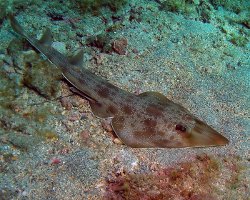Sealife guideThe batwing coral crabCarpilius corallinus
Last updated on 08/04/2025 at 11:11 PM
The batwing coral crab is a species of crab known for its large size and bright coloration, making it an iconic species of coral reefs in the western Atlantic ocean and the Caribbean.
Taxonomy
- Common name: Batwing coral crab, queen crab
- French name: Crabe corail
- Scientific name: Carpilius corallinus (Herbst, 1783)
- Family name: Carpiliidae
- Order name: Decapoda
- Class name: The crustaceans [Malacostraca]
Description
The batwing coral crab has a smooth, rounded carapace that can reach up to about 4 inches wide. Its characteristic coloration ranges from red to orange or even pink, with whitish to cream-colored spots scattered across the top of its shell. Its claws are strong and slightly asymmetrical.
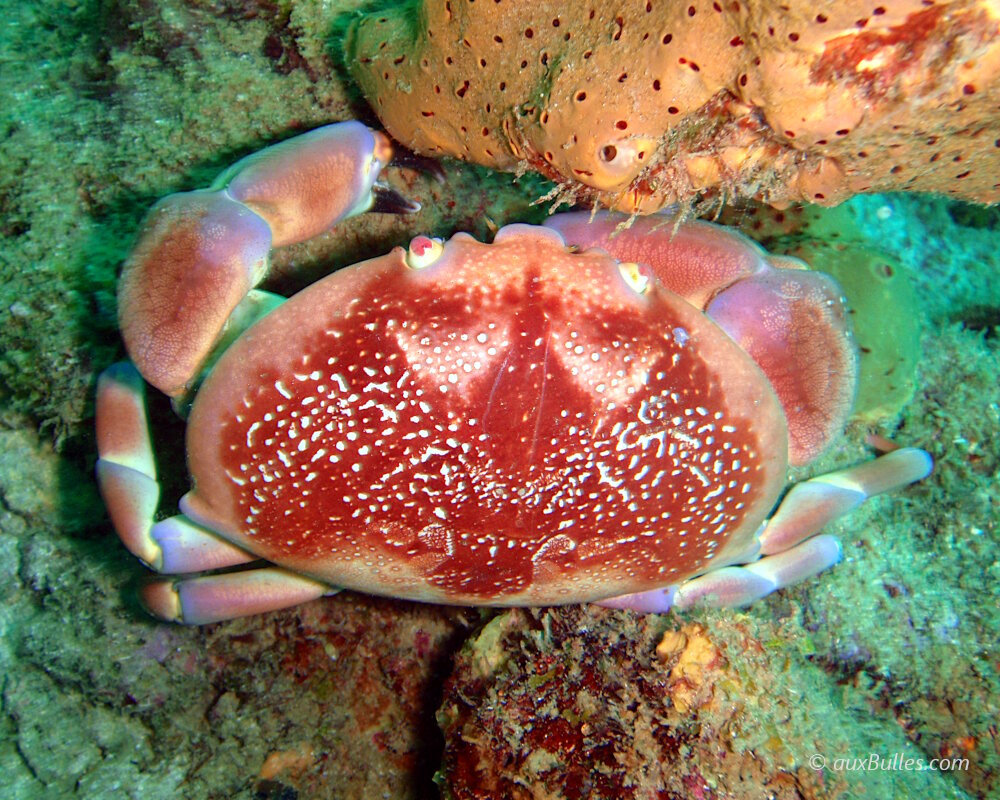
The batwing coral crab displays a distinctive bright coloration that ranges from red to orange, and even pink, with whitish to cream-colored spots
Geographic range
The batwing coral crab is found in the warm tropical and subtropical waters of the western Atlantic ocean, from the coasts of
Florida in the north to northern Brazil in the south, including the Bahamas, the Antilles, the Gulf of Mexico and the Caribbean sea with its many islands such as
Guadeloupe.
Habitat
The batwing coral crab is mostly found in coral reefs and rocky bottoms in shallow waters, generally down to about 65 feet deep. It hides during the day under rocks or in reef crevices and comes out at night to feed on prey it encounters along the way. The batwing coral crab moves slowly but effectively across the reef substrate.
Diet
The batwing coral crab is carnivorous and mainly feeds on
mollusks such as gastropods and bivalves, smaller
crustaceans and sometimes sea urchins. One of its claws is used to crush shells, while the other is used to handle its food.
Reproduction
Mating between the male and female batwing coral crab occurs after the female molts. The eggs are then carried under the female's abdomen until they hatch. The larvae go through several planktonic stages before transforming into juvenile benthic crabs.
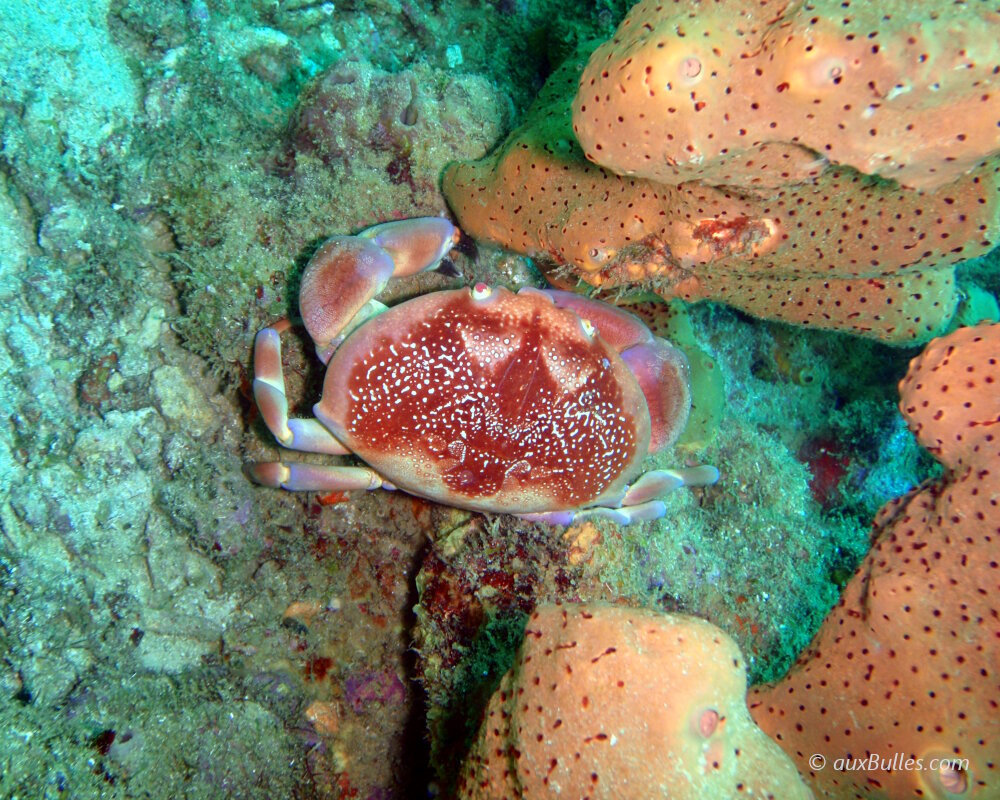
The batwing coral crab (Carpilius corallinus)
Within the same genus
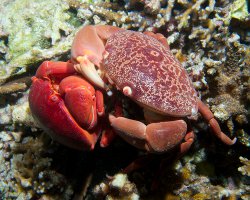
Convex crab
(Carpilius convexus)

Seven-eleven crab
(Carpilius maculatus)
Discover also

Atlantic ghost crab
(Ocypode quadrata)

Durban dancing shrimp
(Rhynchocinetes durbanensis)
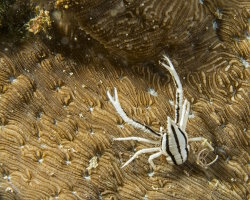
Feather star squat lobster
(Allogalathea elegans)

Ghost crab
(Ocypode gaudichaudii)

Red-eyed reef crab
(Eriphia ferox)
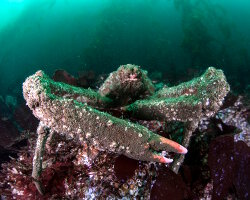
Sheep crab
(Loxorhynchus grandis)

Spotted porcelain crab
(Neopetrolisthes maculatus)

Urchin carrier crab
(Dorippe frascone)
The marine species from Caribbean sea
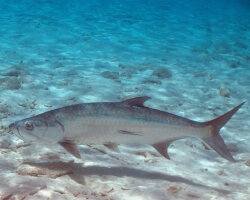
Atlantic tarpon
(Megalops atlanticus)
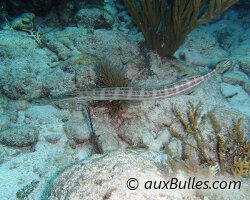
Atlantic trumpetfish
(Aulostomus maculatus)
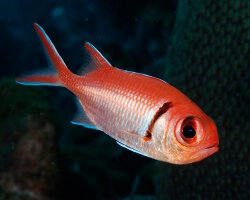
Blackbar soldierfish
(Myripristis jacobus)
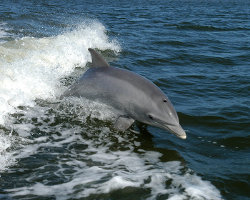
Common bottlenose dolphin
(Tursiops truncatus)
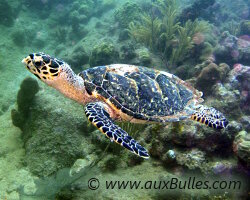
Hawksbill sea turtle
(Eretmochelys imbricata)
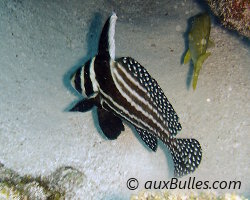
Spotted drum
(Equetus punctatus)
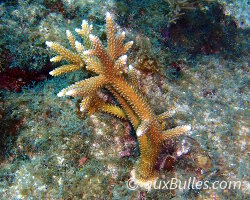
Staghorn coral
(Acropora cervicornis)
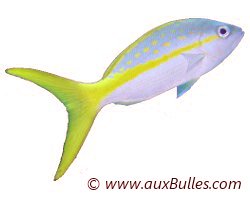
Yellowtail snapper
(Ocyurus chrysurus)
Dive centers

'Les Ilets' dive center
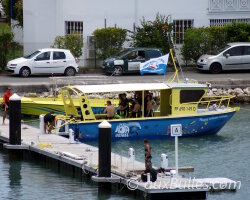
Noa dive center



























